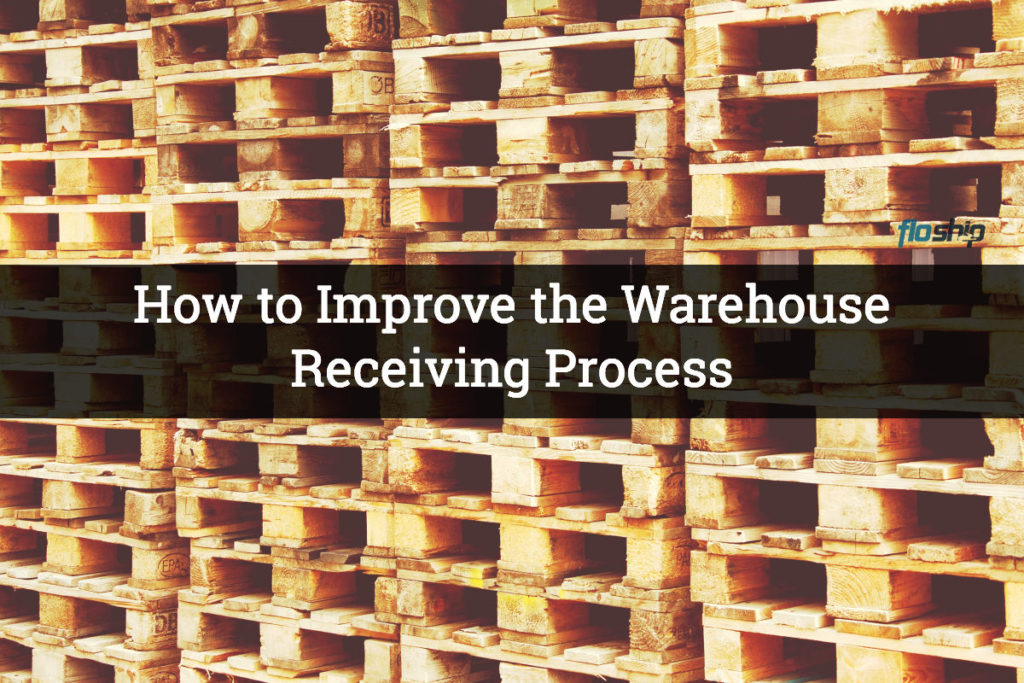No matter what kind of goods your company manufactures or what type of industry you work in, your goal is to move from raw materials to finished saleable products in the least amount of time and with the greatest level of efficiency.
Improving the efficiency of your warehouse operations is one of the best ways to boost your profits and build your business, and once you do that the rest of your job will be much easier.
The receiving process
Whether you run a multinational manufacturing operation or a small startup, improving the efficiency of your operations begins with the receiving process.
The receipt of raw materials and other goods is key to the efficiency of your operations, and if you do not get that critical step right, it will be very hard to recover. Improving your warehouse receiving operations will be key to your success, and it all starts with making sure you receive what you have ordered.
Whether you use new technology like RFID tracking or more traditional inventory control technologies, proper labelling is essential. Good labels will increase the speed and efficiency of the warehouse receiving process and reduce costly errors.
Radio-frequency identification (RFID)
Many companies have chosen RFID technology to improve the efficiency of the receiving process and track their materials in a more cost-effective manner.
RFID technology can also make it easier to rate vendors based on quality and performance, allowing workers to compare order sheets and invoices and ensure the accuracy of each shipment as it is received.
No matter which type of inventory control technology is used, businesses and their management teams aim for peak efficiency when receiving goods and moving them through the supply chain. The cross-docking receiving method sort and receive their orders on the spot, reading the RFID tags, counting the products and comparing the shipment to the associated order sheets.
The actual receiving process is a vital part of any warehouse operation, and it serves as a critical first step for operations of all sizes. Once the raw materials or other goods have been verified against the order and approved by the applicable employees, the process can continue on to the next step.
The stocking process
That next step is the stocking process, and it is just as critical as the initial receiving.
Taking the received products and placing them in the most appropriate storage area is very important, and once again the right inventory control system can make all the difference.
Companies that utilize RFID tracking technology can easily track the newly arrived and freshly received products through their embedded tags, reducing the amount of time it takes to find products and keep the warehouse running at peak efficiency.
No matter what type of inventory control system is used, running the warehouse at optimum efficiency means storing received materials based on their velocity. That means the employees doing the receiving and stocking need to be armed with information about shipping volumes and quantities.
RFID scanners and other modern technologies are great for putting this information at their fingertips, giving workers the data they need to make intelligent decisions and keep goods moving through the supply chain.
The importance of labelling
No matter what the nature of the operation or the size of the warehouse, it all starts with a quality receiving process. The receiving dock is the heart of any efficient warehouse, and the efficiency of the receiving operations is highly dependent on the nature and quality of the labelling.
An informative label can mean the difference between an efficient and well run warehouse receiving operation and a receiving dock filled with lost products and inefficiencies. No matter what type of inventory control system is used, all receiving labels should include some basic pieces of information.
That vital information includes the name of the supplier, the associated purchase order number, the pallet label and quantity, the case label and quantity, the product number, the description, the package count and the SKU.

Monitoring warehouse stock
Warehouse managers and business owners can further improve the efficiency of their operations and address common errors by constantly monitoring the receiving dock and the performance of the vendors the firm uses.
Watching for common problems like the vendor sending the wrong product, shipping damaged products and mislabeling product counts allows business owners to hold their suppliers accountable and lets them spot problems early – before the defective products enter the supply chain.
Conclusion
No matter how complicated or extensive the manufacturing process, it all starts with the receiving.
If the receiving process is efficient and error free, the rest of the supply chain will run far more smoothly. If defective products, miscounts and other errors are allowed to slip through, every subsequent step of the manufacturing process will be impacted.
Yet, those early errors will be compounded every step along the way, resulting in quality control issues, customer complaints and a damaged brand image. If you want to avoid these types of complications, it is time to take a step back and take control of the receiving process.

Ready To Upgrade Your Logistic Solution?
Speak to Floship ecommerce logistic consultant about improving your global support chain today




